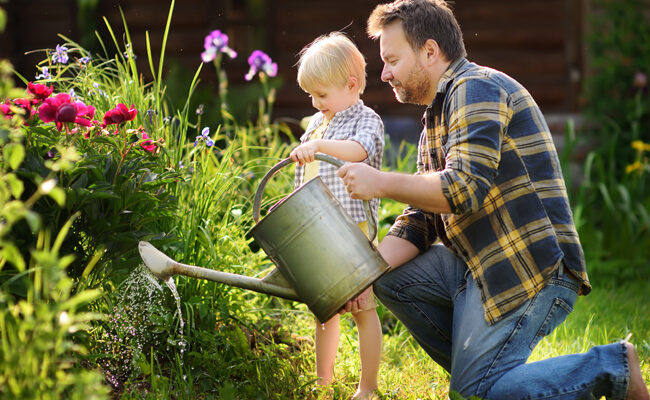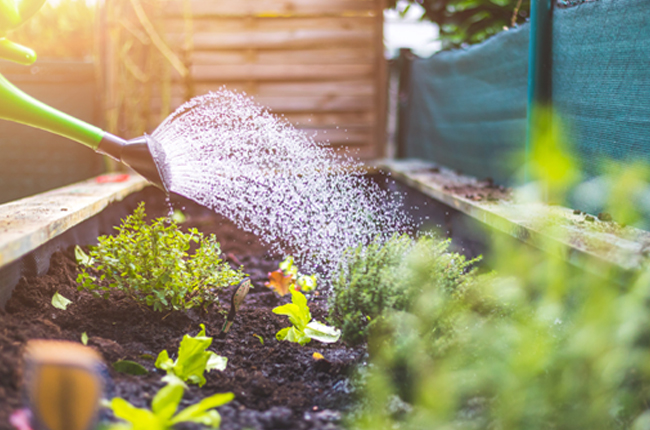
One of the most well-liked recreations some homeowners have is gardening. Besides its popularity, it’s believed that the said hobby has benefits too. Gardening in your front or backyard can enhance your house’s curb appeal and improve its outdoor appearance.
Moreover, it’s also said to be a healthy pastime to maintain and incorporate into your daily routine. When you’re gardening, you plant more trees or flowers, and you pay more attention to greeneries. You also become more aware of the plants or vegetables you have as they become your source of fresh products. Most of all, gardening is a healthy form of exercise which you and your family can engage in anytime.
Some of the main tasks involving home gardening include cultivating the soil, putting fertilizer, removing weeds, and of course, watering your plants. Watering is essential as it’s part of your plants’ food and sustenance. However, some gardeners are said to be struggling with watering their garden because of many factors relating to climate, water access, and the like.
How Water Is Lost
Keeping plants adequately watered during the hotter and drier months would require you to use more water to care for and keep the soil as moist as you possibly can. However, doing this may be challenging as it’s believed water is easily lost during the summer due to faster evaporation rates. Evaporation happens when the water you used for your plants sits at the soil surface for a longer period and the heat and wind change it to gas before it gets absorbed by the soil in its liquid state.
Save On Water Now
It’s said that water’s availability and cost are constantly rising. Thus, lost water translates to wasted money. Fortunately, there are ways you can do to help you solve this problem and still provide enough water required for your plants to grow without wasting much and hurting your pocket.
For your further guidance, here are six possible ways you can conserve and save water when doing home gardening.
1. Use Automated Water-Controlling Devices
A device called an automatic rain shutoff is installed on your irrigation system controller. This tool will signal your controller to automatically shut off once a specific amount of falling rainwater has been detected. With this device, you’ll be able to protect your lawn and your plants from accidental overwatering which can harm them and possibly drown their roots. Most of all, this will also help you save on your water bills.
You can also utilize other tools such as Maze self-watering pots and the like. Automatic pot products like the former are for homeowners who are using containers instead of growing plants directly on the ground. This self-watering system is created to imitate nature, enabling your plants to absorb just the right amount of water for their optimal growth. Automatic pots can also hold enough water for your plants to consume for 12 weeks. This means you won’t need to regularly water them as the plants can feed themselves from the water reserves.
2. Install A Water Tank
Water tanks are helpful gardening companions that can significantly aid you in saving on your utilities. It can help you harvest rainwater and put it to good use. The collected rainwater can be utilized to irrigate your plants and clean your garden or pots. Moreover, you can use filtered rainwater for other household chores such as cleaning your house, washing your cars, and removing dirt on your exteriors.
If you’re in a place with limited access to water, a water tank may be your best solution to your water problems and not just only for conserving water when gardening.
3. Use A Layer Of Mulch
As mentioned earlier, one of the primary reasons your plants aren’t getting enough water is due to evaporation. It’s said that a large chunk of the water you use on your plants during the summer months evaporates from the soil more quickly than they’re supposed to. This is especially true if you’re not using mulch to protect the soil surface.
Using mulch is one of the best methods you can do to help your soil hold as much moisture it can. In addition, the layer of mulch can help avoid the growth of weeds which are also responsible for absorbing and stealing water from neighboring plants.
In choosing your mulches, it’s best if you go for those made with natural materials such as shredded bark and wood chips; they can contribute organic matter and nutrients to the soil in the long run. Keep in mind that some types are more suitable for particular plants and applications. Furthermore, it’s recommended to avoid using fine mulches as they tend to cause build-up and prevent the water from being properly absorbed by the soil.
4. Choose Drought-tolerant Plants
Your choice of plants can significantly affect your water use. Fortunately, you don’t need to compromise your garden’s style and beauty in an attempt to conserve water.
Some of the best plants you can grow that thrive on limited amounts of water are white fir, yucca, and Mediterranean herbs like rosemary, thyme, and sage. They’re known to be resistant to long dry spells which makes them a desirable option. If you’re unsure which type of plants to choose that would require minimal amounts of water and care, you can consult a professional landscaper for advice about the best species for your soil type and weather.
5. Know How To Properly Water Plants
The way you water your plants can make a significant difference in conserving water. Thus, you need to know when and how to water your plants correctly. There are a few tips you need to keep in mind to do it the right way.
It’s believed that the best time to water your garden is during the early morning hours when the natural dew cycle takes place. During this, the sun’s heat is very minimal and evaporation happens slower. However, doing your watering in the evening is a no-go as the night-time temperature isn’t enough to dry the moisture in your plants’ leaves and stems. This may lead to the growth of fungal pathogens that can wreak havoc and damage your greens.
Moreover, it’s advisable to best use simple watering tools such as soaker hoses and a simple pail or bucket to water your plants by hand. This way, you’ll have control over the amount of water and how it can reach the soil. It’s also recommended to avoid using overhead sprinklers as they can be wasteful and they tend to only water the leaves of the plants and not the soil itself. Only watering the leaves will only encourage more evaporation and deprive your plants of the water they need.
6. Recycle Used Water From Your Household
Used water is said to be still useful in many cases. It’s believed that a single household consumes a lot of water for a variety of purposes including taking a shower, washing and cooking food, and the like. However, did you know that the water used in these activities that most people oftentimes just throw away is helpful in solving your watering woes? Listed below are just some of the viable options you can consider.

Cooking Water
If you use water to steam your vegetables, you can reuse that water by letting it cool down rather than tipping it directly down the sink. Cooking water is full of nutrients, making it a healthy alternative and providing free fertilizer for your plants.
Fish Tank Water
You can reuse old fish tank water for your garden plants. It’s rich in phosphorus which is good for your plants too. Phosphorus is regarded to provide energy to your plants and therefore promotes root growth.
Shower Water
When showering, place a couple of buckets below your shower as they will catch the water you use. Ensure you don’t collect water filled with soap and detergents as they’re toxic to plants and not viable for reuse.
Bottomline
Keep these tips in mind as not only will these help you conserve water when gardening, but they also ensure you’re growing a healthy landscape in your lawn and reduce your water bills at the same time. Remember, these micro efforts, when done regularly, can make positive changes not only for you but for the environment.
Leave a Reply